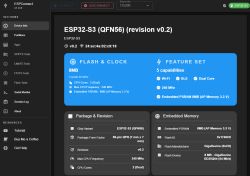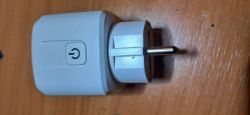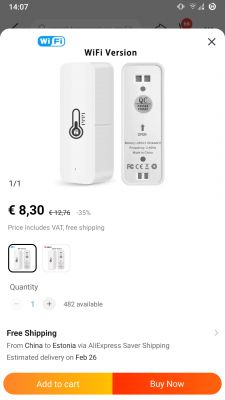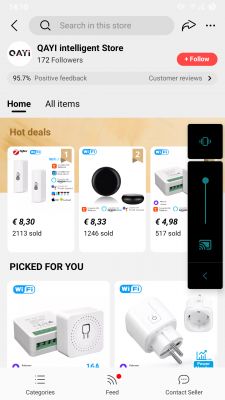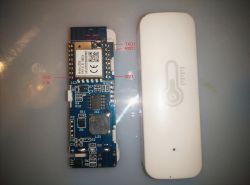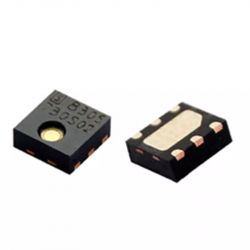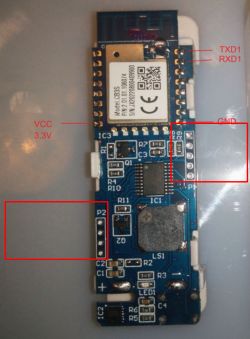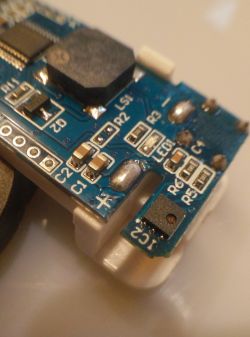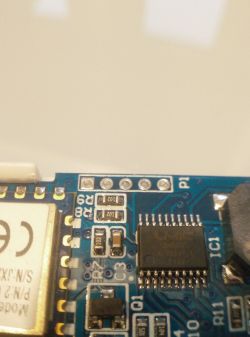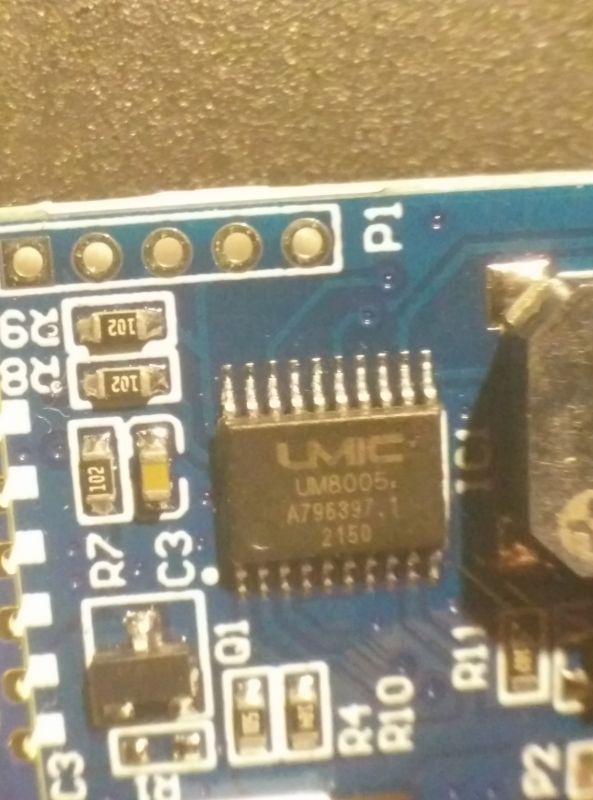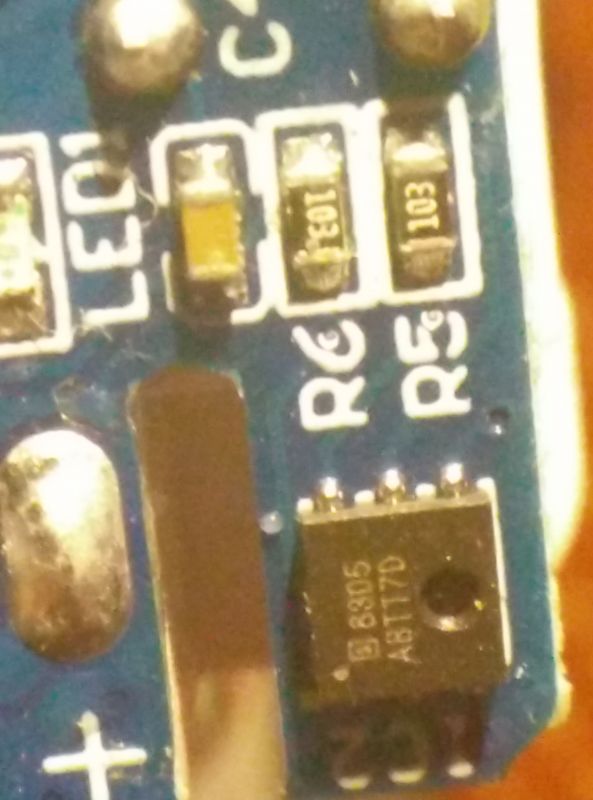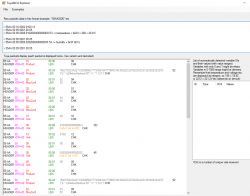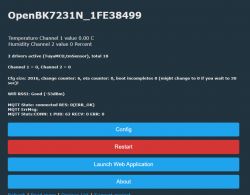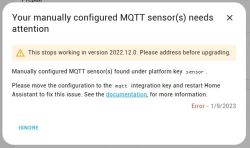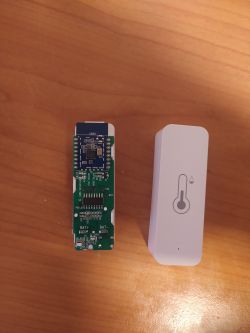Generic battery-powered temperature and humidity sensor.
It is from Aliexpress but as always there simple search there brings up more relevant results then looking at some specific seller
I can confirm that flashing it using Python and OpenBK7231N_QIO file works. The new flashing tool by OB doesn't seem to be ready yet.
I am also not sure but it is said to be using a CHT8305 sensor.
CB3S datasheet: https://developer.tuya.com/en/docs/iot/cb3s?id=Kai94mec0s076
CHT8305: http://sensylink.com/a/products/lm2/CHT8305.html
At the moment it seems that it does not have a driver yet, but the discussion about CHT8305 driver seems to be going on here https://github.com/openshwprojects/OpenBK7231T_App/issues/584
I also have no idea how to set the pins for this device. In addition to temp and hum information, battery information should also be received. Also, this device probably requires a deep sleep option. (Originally in app it had the option to set custom polling time)
Update:
Summary of how to get your sensor working.
If you have successfully overwritten the sensor software, connect to the sensor's temporary AP and set up your wifi and MQTT on browser address 192.168.4.1.
When the sensor restart is done, you can find the sensor's new address in your router's DHCP lease table.
Connect from your web browser to that address.
Set sensor flags 10 and 19 to true.
In configuring general tab set uptime seconds something btwn 5-15 seconds.
Open the Web Application and update the software to the latest version. (optional)
Create an u desktop autoexec.bat file with the following content:
drop bat file to the filesystem box (in web application).
Restart sensor.
Wait a few minutes to see if the sensor reads data. On the sensor home page, you should also see that two divers are working.
If OK, in order for MQTT to work, you must now remove the external power supply of the sensor and leave it only on the batteries. I managed to leave the chip power leads inside the case in case I need them in the future.
If you are using Home Assistant you need to add to your configuration.yaml file the following (Modify it according to your own setup!):
Restart HA and check your entities.
These settings may change at any time if HA or OpenBekken changes its software!
It is from Aliexpress but as always there simple search there brings up more relevant results then looking at some specific seller
I can confirm that flashing it using Python and OpenBK7231N_QIO file works. The new flashing tool by OB doesn't seem to be ready yet.
I am also not sure but it is said to be using a CHT8305 sensor.
CB3S datasheet: https://developer.tuya.com/en/docs/iot/cb3s?id=Kai94mec0s076
CHT8305: http://sensylink.com/a/products/lm2/CHT8305.html
At the moment it seems that it does not have a driver yet, but the discussion about CHT8305 driver seems to be going on here https://github.com/openshwprojects/OpenBK7231T_App/issues/584
I also have no idea how to set the pins for this device. In addition to temp and hum information, battery information should also be received. Also, this device probably requires a deep sleep option. (Originally in app it had the option to set custom polling time)
Update:
Summary of how to get your sensor working.
If you have successfully overwritten the sensor software, connect to the sensor's temporary AP and set up your wifi and MQTT on browser address 192.168.4.1.
When the sensor restart is done, you can find the sensor's new address in your router's DHCP lease table.
Connect from your web browser to that address.
Set sensor flags 10 and 19 to true.
In configuring general tab set uptime seconds something btwn 5-15 seconds.
Open the Web Application and update the software to the latest version. (optional)
Create an u desktop autoexec.bat file with the following content:
startDriver tuyaMCU
startDriver tmSensor
linkTuyaMCUOutputToChannel 1 val 1
setChannelType 1 Temperature_Div10
linkTuyaMCUOutputToChannel 2 val 2
setChannelType 2 Humiditydrop bat file to the filesystem box (in web application).
Restart sensor.
Wait a few minutes to see if the sensor reads data. On the sensor home page, you should also see that two divers are working.
If OK, in order for MQTT to work, you must now remove the external power supply of the sensor and leave it only on the batteries. I managed to leave the chip power leads inside the case in case I need them in the future.
If you are using Home Assistant you need to add to your configuration.yaml file the following (Modify it according to your own setup!):
mqtt:
sensor:
- name: "your sensor name here"
unique_id: your sensor unique id here (you choose it yourself)
state_topic: "your sensor mqtt topic here/1/get"
unit_of_measurement: 'C'
value_template: "{{ (value | float * 0.1 | round(1)) }}"
- name: "your sensor name here"
unique_id: your sensor unique id here (you choose it yourself)
state_topic: "your sensor mqtt topic here/2/get"
unit_of_measurement: '%'
value_template: "{{ value }}"Restart HA and check your entities.
These settings may change at any time if HA or OpenBekken changes its software!
Cool? Ranking DIY



